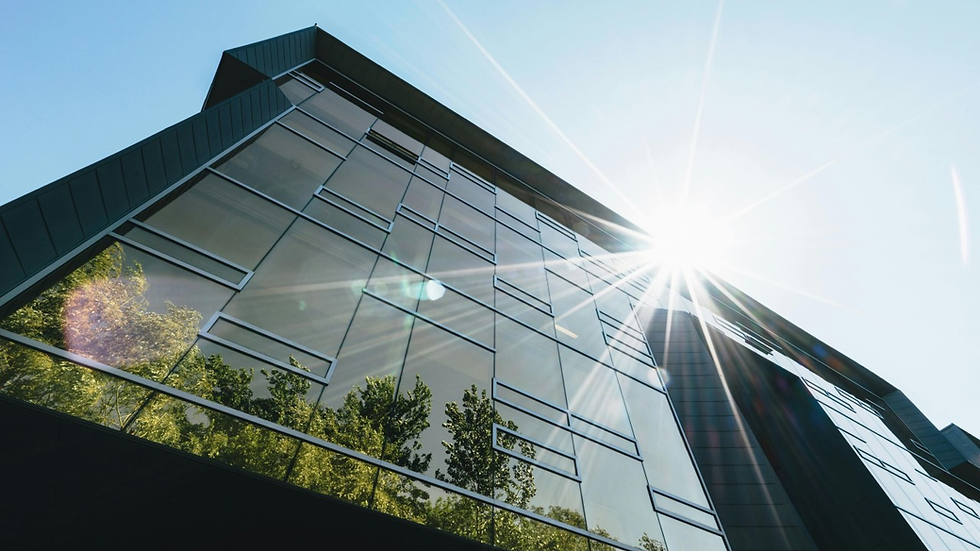How Building Sustainability Enhances Property Valuations
- Ahmad Hammouz
- Jan 1
- 2 min read
In today’s rapidly evolving real estate market, building sustainability has emerged as a pivotal factor influencing property valuations. With growing awareness of environmental issues and stringent regulatory frameworks, sustainability features in buildings are no longer a luxury - they are an essential component of modern property value assessments.
Global efforts to address climate change have brought about a transformative shift in the real estate industry. Governments, corporations, and individuals are increasingly prioritizing buildings that align with environmental, social, and governance (ESG) principles. This shift is driven by the below factors:
Sustainability Frameworks: Standards such as LEED (Leadership in Energy and Environmental Design), ZCB (Zero Carbon Building), and WELL have set benchmarks for sustainability. Properties adhering to these certifications often command higher values due to their alignment with sustainability standards that ensure future resilience and value.
Market Demand: Occupants are seeking healthier, energy-efficient, and environmentally conscious spaces. Studies reveal that sustainable buildings often achieve higher occupancy rates and rental premiums.
Investor Interest: Real estate investors are increasingly favoring properties with sustainable features such as energy-efficient designs and renewable energy systems recognizing their potential for higher long-term returns, reduced operational costs, and alignment with growing market demand for eco-conscious living.

How Does Sustainability Impact Property Valuation?
Energy Efficiency: Sustainable buildings with advanced energy conservation measures reduce operating costs. Lower utility bills make these properties more appealing to buyers and tenants, thereby enhancing market value. Features such as high-performance insulation, LED lighting, and water-saving fixtures lower maintenance expenses, directly influencing property net operating income.
Health and Wellness: Certifications like LEED and WELL highlight features that promote occupant health, such as better air quality and natural lighting. These attributes contribute to higher tenant satisfaction and retention.
Risk Mitigation: Properties built to withstand climate-related risks—such as floods, heatwaves, or storms—are more resilient, which translates to lower insurance costs and reduced financial risk.
The Financial Perspective: ROI of Sustainability
While sustainable building features may involve higher upfront costs, the long-term financial benefits outweigh these expenses. From increased asset valuation and operational savings to enhanced tenant loyalty, the return on investment of sustainability is undeniable. Furthermore, as financial institutions and investors continue to prioritize ESG-aligned portfolios, sustainable properties are likely to experience greater demand and liquidity.
To conclude, as the real estate market evolves, properties that incorporate sustainability features will continue to outperform traditional counterparts in terms of valuation, marketability, and resilience. Embracing sustainability is an opportunity to future-proof investments, meet market demands, and contribute to a greener, healthier world.
If you’re looking to understand how sustainability upgrades can enhance the value of your property, connect with us at info@gsp-engineering.ca. Let’s build a sustainable future together!


Comments